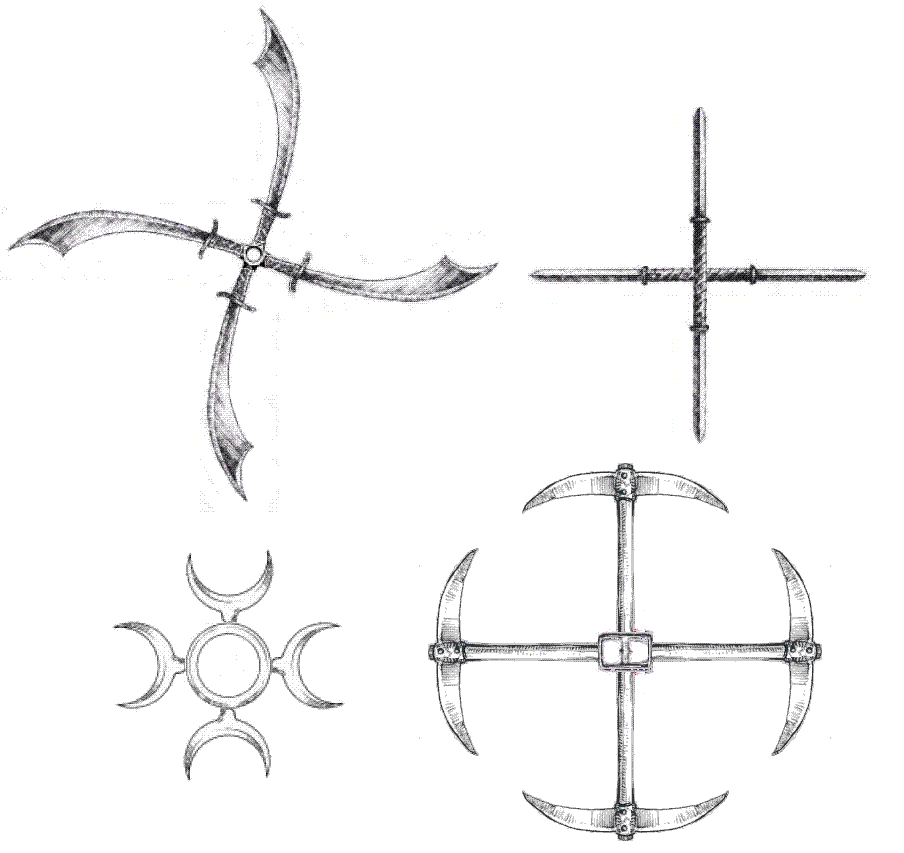Exotic weapons
Exotic weapons Exotic weapons are just plain weird weapons that you need a special Feat in order to wield.
Examples
D&D 3rd Edition
In D&D 3.5, feats were required for an exotic weapon to be used. Certain classes, such as the Monk or the Ninja, got automatic proficiency with some of them (such as kamas or nunchucks) but not all of them, where as certain prestige classes (Exotic Weapon Master, duh) got proficiency with a LOT of them. Some weapons were good (spiked chain was a must-have for tripping builds), some were bad (Whips just straight up SUCKED) and most were okay (kamas were kind of a different-looking shortsword). On the whole, it wasn't considered a good idea to use a feat to get one of these unless it was a prereq for something better or a special part of a build (such as the chain-tripper).
Pathfinder smoothed things out a little. Aside from some minor examples (spiked chain getting nerfed back to the stone age for its ubiquity in 3.5 is a common target for attack), most exotic weapons are superior versions of ordinary ones, with either higher damage or better crit ranges, compensated by the extra resources necessary to use them. Those that didn't (like whips) were just moved over to the martial column.
D&D 4
Generally, like Pathfinder, weapons that had better combinations of traits than ordinary ones. However, the changes to the combat system also made them much less helpful, particularly the removal of crit ranges/multipliers.
D&D 5
5th edition no longer has exotic weapons- instead it mentions them as different versions of normal or martial weapons, which makes sense because that's what they were half the time in other editions anyway. In particular, nunchucks are mentioned as clubs, kamas are mentioned as sickles, and the spike chain is probably the whip (but since they got rid of tripping in 5e it doesn't really matter anymore). This is most likely for the better, as now the average weaboo can't claim that "only I can use my weapons" since they're just slightly adjusted versions of normal ones.



